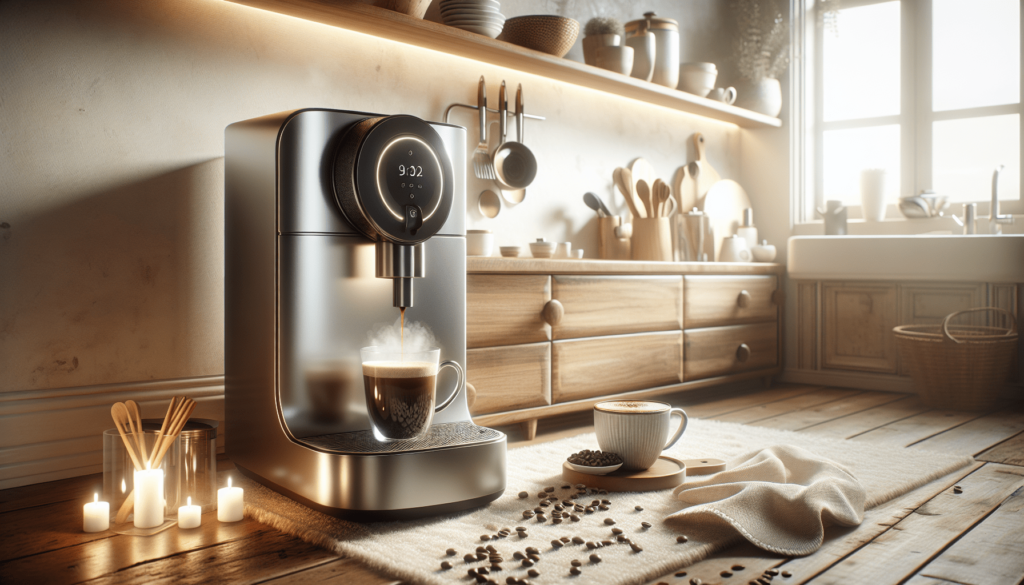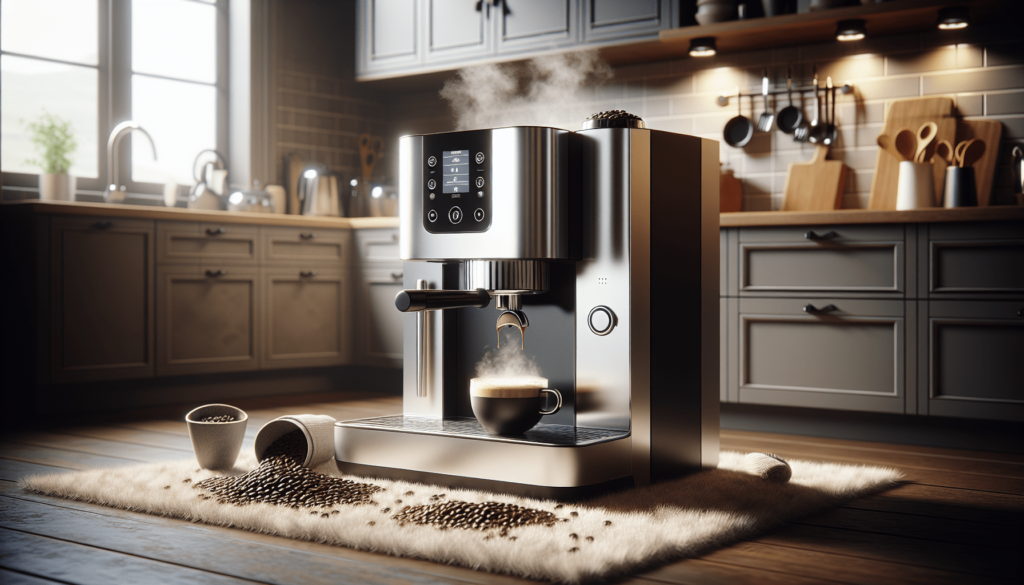Have you ever wondered what a coffee system does?

Introduction
Sure, you know it helps make coffee, but beyond that, what exactly are you getting with a coffee system? The term “coffee system” might sound technical, but it’s essentially the heart and soul of your coffee-making experience. Whether you’re a casual coffee drinker or a full-blown aficionado, understanding the ins and outs of what a coffee system is and does can enrich your appreciation for each cup you enjoy.
What is a Coffee System?
Definition
A coffee system is an integrated setup used to brew coffee. It generally consists of hardware, such as machines and grinders, and sometimes software, especially for modern smart coffee makers. These components work together to transform coffee beans into the delightful beverage we all love. Whether it’s a simple drip coffee maker, an advanced espresso machine, or a multifunctional unit that does both, the coffee system ensures that the brewing process is smooth, consistent, and convenient.
Types of Coffee Systems
To better grasp what a coffee system does, it’s essential to identify its different types. Here’s a brief overview:
| Type | Description |
|---|---|
| Drip Coffee Makers | The most common type, known for its simplicity and ease of use. |
| Espresso Machines | Specialized machines that brew coffee by forcing pressurized water through finely-ground coffee. |
| Single-Serve Makers | Designed for convenience, these use pods or capsules for quick, single servings. |
| French Press | Manual brewing systems where coffee grounds steep in hot water before being pressed out. |
| Coffee Pods Systems | Similar to single-serve but more sophisticated; these systems can often brew different styles. |
The Core Functions of a Coffee System
Brewing
At its most basic level, a coffee system’s primary function is to brew coffee. This involves a series of steps starting from grinding the beans, heating the water, and finally, mixing them to extract the perfect flavor. Different systems achieve this through various methods, such as drip brewing, pressure brewing (as in espresso machines), or steeping (like the French Press).
Grinding
Some coffee systems come with integrated grinders that let you grind your beans right before brewing. Freshly ground coffee can significantly enhance the taste of your brew. By controlling the grind size, you can influence the flavor profile, strength, and texture of your coffee. The grinding component may have multiple settings to accommodate different types of coffee drinks, from espresso to cold brew.
Water Heating
Water temperature is crucial for extracting the best flavors from your coffee beans. Coffee systems generally have built-in heaters to ensure that the water reaches the optimal temperature for brewing, usually between 195°F and 205°F. Advanced models allow you to control and adjust this temperature to match your specific preferences.
The Mechanics Behind Coffee Systems
Drip Coffee Makers
Drip coffee makers operate by passing hot water through coffee grounds held in a filter. The filtered water then drips into a carafe or pot. These systems are generally straightforward to use and are perfect for making larger quantities of coffee. The simplicity of a drip coffee maker is often its biggest selling point.
Pros:
- Easy to use
- Great for making multiple servings
Cons:
- Limited control over brewing variables
- Usually requires paper filters
Espresso Machines
Espresso machines use pressurized water to brew coffee. This pressure extracts a concentrated, robust shot of coffee known as espresso. Espresso machines come in various types, including manual, semi-automatic, and fully automatic, each offering different degrees of control over the brewing process.
Pros:
- Produces rich and strong coffee
- Suitable for making specialty drinks like lattes and cappuccinos
Cons:
- Can be complicated to use
- Generally more expensive
Single-Serve Makers
Single-Serve systems are tailored for convenience, using pre-packaged pods or capsules. These are perfect for those who need a quick coffee fix without fussing over beans and grind sizes. They also minimize waste, as each pod is designed for a single serving.
Pros:
- Quick and easy to use
- Minimal cleanup required
Cons:
- More expensive per cup
- Pods can contribute to environmental waste
French Press
The French Press is a manual coffee system that involves steeping coffee grounds in hot water before plunging to separate the grounds from the liquid. This method allows you direct control over brewing time and coffee-to-water ratios, giving you a customizable coffee experience.
Pros:
- Control over brewing variables
- Produces rich, full-bodied coffee
Cons:
- Requires manual effort
- Coffee grounds can sometimes seep into the final brew

Advanced Features in Modern Coffee Systems
Programmable Settings
Many modern coffee systems offer programmable features that let you customize your brew. You can set the brew time, select coffee strength, or even choose a delayed brewing option so your coffee is ready when you wake up. This convenience ensures that your coffee routine adapts to your lifestyle.
Wi-Fi Connectivity and Smart Features
Some advanced coffee makers come with Wi-Fi connectivity, allowing you to control your coffee system from your smartphone. You can start brewing from your bed, customize your brew settings remotely, and even receive maintenance alerts.
Milk Frothers and Steam Wands
For those who enjoy milk-based coffee drinks, coffee systems with built-in milk frothers and steam wands are a boon. These features let you froth milk for lattes, cappuccinos, and macchiatos, broadening the range of beverages you can create at home.
Maintenance and Care for Coffee Systems
Regular Cleaning
To ensure optimal performance, it’s crucial to keep your coffee system clean. For drip coffee makers, this might involve regular descaling to remove mineral buildup. Espresso machines may require backflushing and cleaning the steam wand. Single-serve makers need attention to the pod holder and water reservoir. A clean machine not only lasts longer but also ensures the best tasting coffee.
Replacement Parts
Over time, some components like filters, gaskets, and grinders may need replacing. Having a basic understanding of your coffee system helps you identify and replace these parts before they affect performance. Regularly check the manufacturer’s guidelines for maintenance schedules and replace parts as recommended.
Environmental Impact
Energy Consumption
Coffee systems vary in their energy consumption. Espresso machines, for instance, often consume more power due to the need to generate high pressure and temperature. Opting for energy-efficient models or systems with standby modes can minimize your energy footprint.
Waste Management
Single-serve makers and coffee pods systems generate more waste compared to traditional methods. However, some brands now offer recyclable or biodegradable pods to mitigate this issue. Choose options that align with environmentally-friendly practices to reduce your coffee-related waste.
Sustainable Coffee Sourcing
Another way to minimize the environmental impact is by choosing sustainably sourced coffee beans. Look for certifications like Fair Trade, Rainforest Alliance, or Organic, which ensure that the coffee you drink supports ethical and environmentally-friendly practices.
Conclusion
You can now appreciate that a coffee system does much more than just make coffee. It is an intricate orchestration of components that grind, heat, and brew to produce your perfect cup. From the convenient single-serve makers to the sophisticated espresso machines, coffee systems offer a wide range of functionalities to suit different preferences and lifestyles. Whether you’re an everyday coffee drinker or a seasoned barista in the making, understanding your coffee system can add another layer of enjoyment to your coffee experience.
